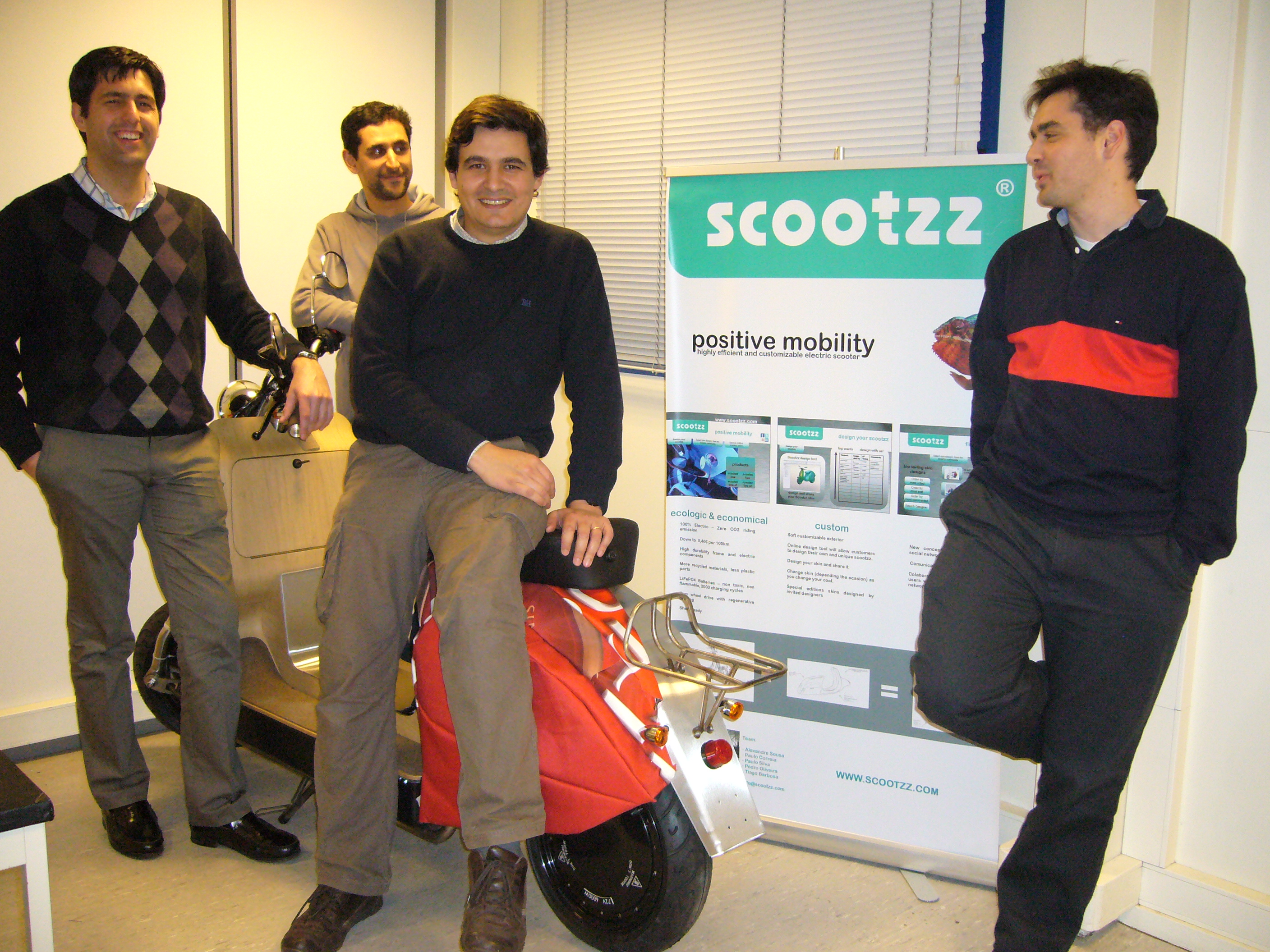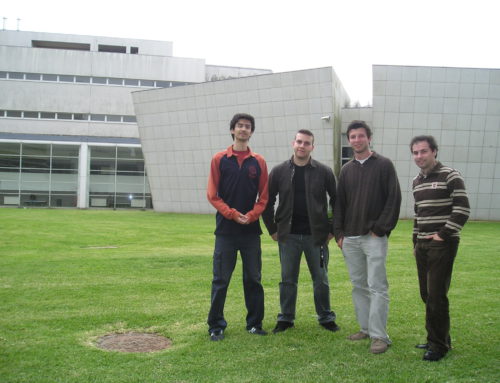SCOOTZZ
We interview today four students from the MIETE Edition 2010/12: Tiago Barbosa, Paulo Silva, Paulo Correia and Pedro Oliveira. We are delighted to have this interview and anxious to know about your new company SCOOTZZ. However, before that, let us introduce you all to our readers.
Tiago Barbosa is the Scootzz imagineer. He has a bachelor degree in Mechanical Engineering from FEUP (Faculty of Engineering of the University of Porto), with a wide experience in the automotive industry. Tiago has in his curriculum the participation in EcoMarathon Shell race, with a vehicle of his own design and build (Circuit Paul Ricard, France, 19941996). During his life he has accumulated over 150.000kms in motorcycle riding. Paulo Silva is a Computer Scientist by the University of Minho and a truly passionate by the open source movement and the collaborative development paradigm. He’s developing for the World Wide Web since 2004. Paulo Correia a bachelor degree in Economics from FEP (Faculty of Economics of University of Porto). During his bachelor degree he was junior consultant on FEP Junior Consulting. With a valuable experience on government grants, investment, cluster analysis, R&D and innovation projects he is currently collaborating with a knowledge management consultancy which is a reference in the Innovation and Science and Technology sectors. Pedro Oliveira has a bachelor degree in communication and marketing from Escola Superior de Educação de Viseu. He was responsible for car import/export to the Portuguese market for a wide range of companies and actually he also manages another very successfull business of custom motorcycle manufacturer/seller – “Ton-up-garage”.
MIETE-BLOG: SCOOTZZ was born in 2011 in the scope of a MIETE course. What is it exactly that you do?
Formally, Scootzz, Lda, manufactures eco-efficient mobility solutions. Demystifying, we built from scratch a two wheel electric vehicle based on the 4Rs concept: Reduction, Reuse, Recycling and Recovery, extending the “eco” from the components/materials selection, manufacturing process to the power source.
MIETE-BLOG: What is the distinctive value proposition of SCOOTZZ in the market of Green Mobility?
Our vehicle was built to last with the best available technologies in the market and a criterious materials selection which are in most cases natural materials like wood and cork. We push to the bottom line the plastic and paints usage.
Scootzz has a singular characteristic: its outer parts are made from fabrics which can be freely customizable and replaced at home by the user, what enables his uniqueness. This will enable a new level of interaction between users and vehicle, and between users, as a new comunication mean, on the street. The online custumizing tools also enable us to nurture a colaborative community, that can share designs and experiences.
We strongly believe that current market manufacturers are not doing the best they can on the “Green Mobility”, while they’re using the same old manufacturing processes, not taking full advantage of the electric technology possibilities.
MIETE-BLOG: How did it all happen? How relevant was MIETE training in the whole process?
Although a pre-existing idea before the MIETE course, the Scootzz project only evolved from idea to business concept during the MIETE course. Tiago Barbosa came to MIETE with an idea, looking for business knowledge to develop it, and a multidisciplinary team to join the project, and MIETE was the best place to do it.
All five Scootzz original founders went to the MIETE looking for business and innovation guidelines: how to demystify the entrepreneurship world and start a real business from an ideia.
It is consensual that the first year on MIETE played an important role on creativity: don’t discard any idea because all are (somehow) valid and then the requested teamwork which was important to allow us to met each other and work on other’s ideas.
Later on MIETE, we truly enjoyed the engagement of all collegues on the business idea validation and development and also the teachers availability, however we lived hard times trying to manage simultaneously the business and the academic work which was, for many times, completely disconnected.
At the end, a hard choice had to be done between the company health and the academic success, but again it was consensual and all our effort was concentrated on the hardes task: the business needs on product design, financial needs, customer development and opportunities exploration.





